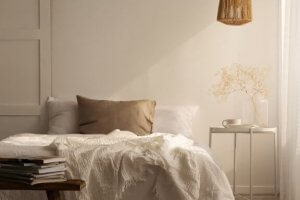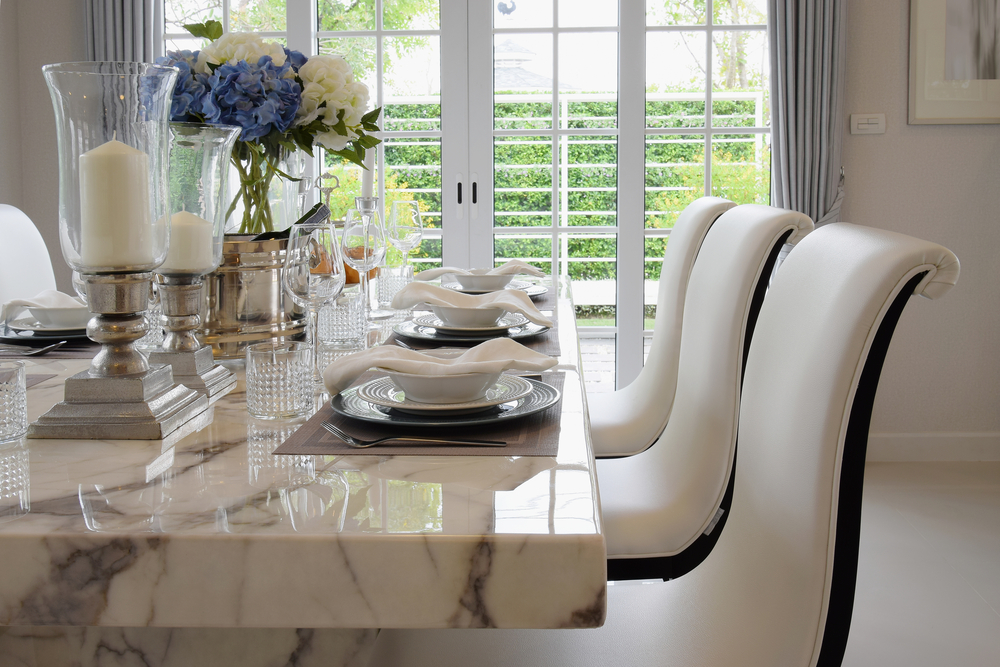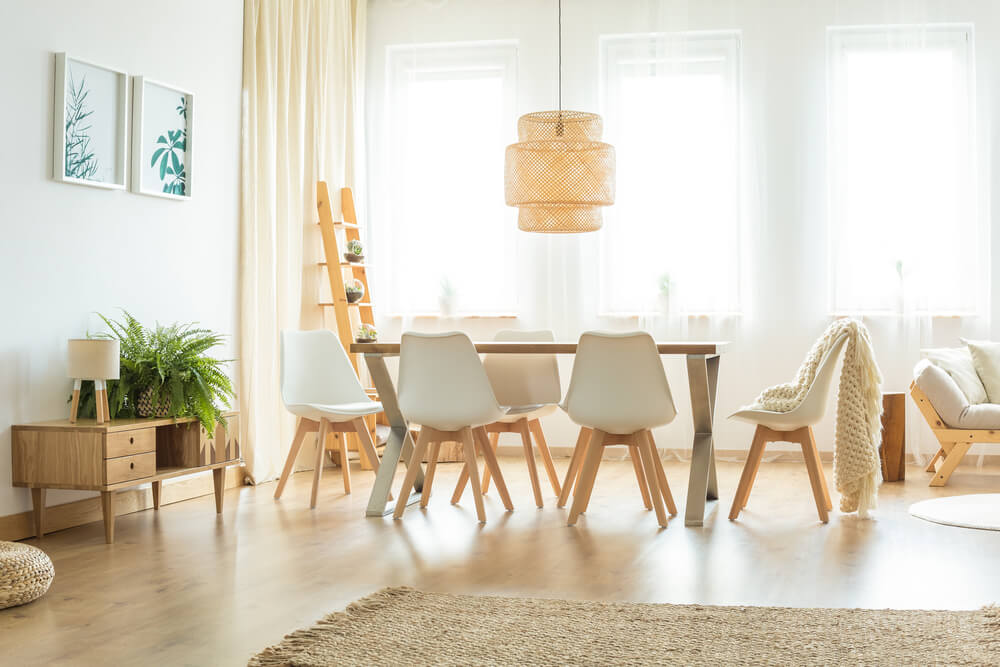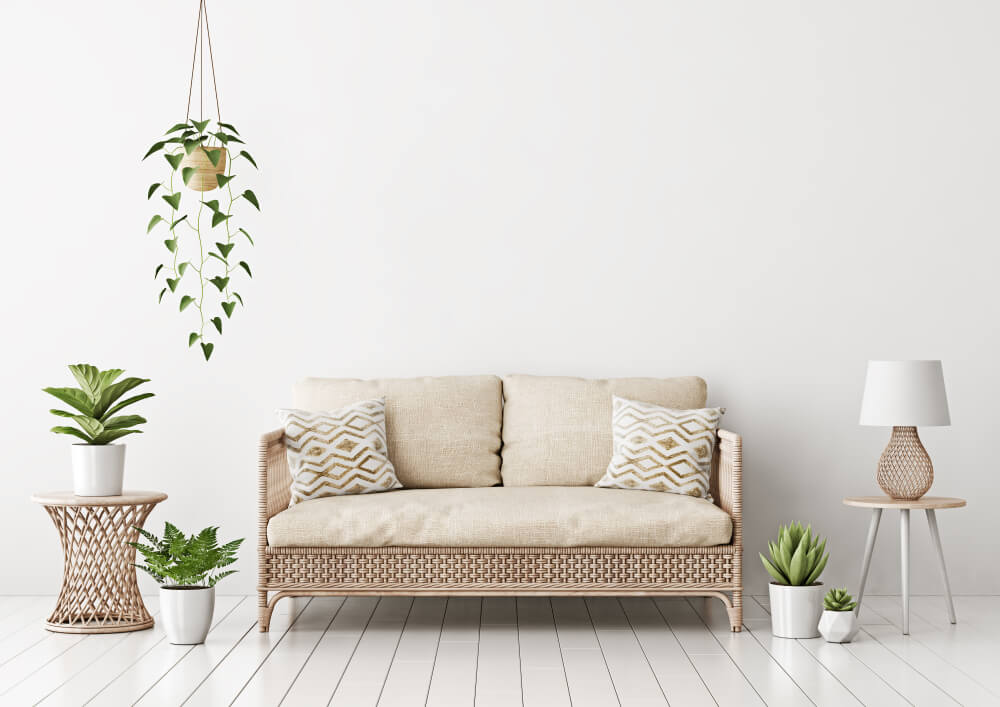Off-White Interior Decor - Where to Use it

If you want an original and innovative color for your home, off-white is the color for you. There are many different ways to use it. It is the perfect complementary color, and a great way to really bring your decoration together.
You’ve probably already heard about this color, but you might not have actually used it in your decor. It is normally used on walls and custom-made items. It’s not usually used for furniture, as it can create too stark a contrast with the other elements in the room.
In this article, we’ll discuss some of the many different ways you can use off-white in your decor. You don’t have to limit yourself to just one element – be bold, and try to use it in the most interesting ways possible, combining it with other colors to create the perfect look.
What is off-white?

Off-white is a tone that is often used as a base color, a backdrop upon which you can combine and contrast other colors. It is not bright or eye-catching, and it won’t be the focal point in your decor; instead, it is designed to create a background.
As the name suggests, off-white is a white color with a beige or gray tinge, which softens the intensity and purity of bright white. In other words, off-white redefines the very purpose of white, taking your interior decor in a different direction.
Off-white conveys feelings of tranquillity, helping to create a bright and peaceful environment. Unlike dark colors, this light tone is also great for making your room look more spacious. It’s the perfect choice when decorating small homes.
This understated tone will create a delicate and timeless look.
Using off-white in bedrooms

Pure white reflects light, visually increasing the space and giving the room a sense of purity and brightness. On sunny days, the light bouncing off the walls can be almost blinding. Off-white is the perfect solution to this problem:
- Off-white is a less intense color. As a result, it doesn’t reflect as much light, creating a more soothing environment. The room will take on a softer look, without the harshness of pure white.
- Don’t go overboard. If you use off-white on the walls, there’s no need to then also use it on the furniture. In bedrooms, you can use your bed sheets to add a touch of color to your bedroom, creating a beautiful, harmonious contrast.
- The other option is to furnish your room with off-white furniture so that it becomes the main theme in your bedroom. This will create a pure look, which you can combine and contrast with brighter tones.
- If you’re going to combine your off-white decor with other white tones, make sure to use a mixture of lighter and darker tones. All you need to do is tinge the white paint with other tones to soften it.
Avant-garde living rooms

If you decide to use off-white in your living room, you can use the same method: use off-white for the walls, while decorating the rest of the room in other colors. But if you want it to play a more prominent role in your decor, you might find the following advice useful.
- Don’t let your room look too plain. To do this, you need to avoid over-using off-white. It’s best to create contrast by using a combination of different white shades.
- If you incorporate black into your decor, you can create a really avant-garde living room. It will create a clear contrast with the white, and a neutral look that is full of subtlety and elegance.
- You can also add color by decorating your walls with paintings, or plants to add a touch of green. Brightly colored sofas and other pieces of furniture are great for creating contrast, or vice versa.
Other elements

Some other elements that look great in off-white include floor or ceiling lamps, vases, and cushions. Again, you can mix them with gray or black tones to create contrast.
But really, almost any object can look great in this color. There’s just one thing you need to remember – your decor needs to combine contrast with harmony to create the perfect look.
If you want an original and innovative color for your home, off-white is the color for you. There are many different ways to use it. It is the perfect complementary color, and a great way to really bring your decoration together.
You’ve probably already heard about this color, but you might not have actually used it in your decor. It is normally used on walls and custom-made items. It’s not usually used for furniture, as it can create too stark a contrast with the other elements in the room.
In this article, we’ll discuss some of the many different ways you can use off-white in your decor. You don’t have to limit yourself to just one element – be bold, and try to use it in the most interesting ways possible, combining it with other colors to create the perfect look.
What is off-white?

Off-white is a tone that is often used as a base color, a backdrop upon which you can combine and contrast other colors. It is not bright or eye-catching, and it won’t be the focal point in your decor; instead, it is designed to create a background.
As the name suggests, off-white is a white color with a beige or gray tinge, which softens the intensity and purity of bright white. In other words, off-white redefines the very purpose of white, taking your interior decor in a different direction.
Off-white conveys feelings of tranquillity, helping to create a bright and peaceful environment. Unlike dark colors, this light tone is also great for making your room look more spacious. It’s the perfect choice when decorating small homes.
This understated tone will create a delicate and timeless look.
Using off-white in bedrooms

Pure white reflects light, visually increasing the space and giving the room a sense of purity and brightness. On sunny days, the light bouncing off the walls can be almost blinding. Off-white is the perfect solution to this problem:
- Off-white is a less intense color. As a result, it doesn’t reflect as much light, creating a more soothing environment. The room will take on a softer look, without the harshness of pure white.
- Don’t go overboard. If you use off-white on the walls, there’s no need to then also use it on the furniture. In bedrooms, you can use your bed sheets to add a touch of color to your bedroom, creating a beautiful, harmonious contrast.
- The other option is to furnish your room with off-white furniture so that it becomes the main theme in your bedroom. This will create a pure look, which you can combine and contrast with brighter tones.
- If you’re going to combine your off-white decor with other white tones, make sure to use a mixture of lighter and darker tones. All you need to do is tinge the white paint with other tones to soften it.
Avant-garde living rooms

If you decide to use off-white in your living room, you can use the same method: use off-white for the walls, while decorating the rest of the room in other colors. But if you want it to play a more prominent role in your decor, you might find the following advice useful.
- Don’t let your room look too plain. To do this, you need to avoid over-using off-white. It’s best to create contrast by using a combination of different white shades.
- If you incorporate black into your decor, you can create a really avant-garde living room. It will create a clear contrast with the white, and a neutral look that is full of subtlety and elegance.
- You can also add color by decorating your walls with paintings, or plants to add a touch of green. Brightly colored sofas and other pieces of furniture are great for creating contrast, or vice versa.
Other elements

Some other elements that look great in off-white include floor or ceiling lamps, vases, and cushions. Again, you can mix them with gray or black tones to create contrast.
But really, almost any object can look great in this color. There’s just one thing you need to remember – your decor needs to combine contrast with harmony to create the perfect look.
All cited sources were thoroughly reviewed by our team to ensure their quality, reliability, currency, and validity. The bibliography of this article was considered reliable and of academic or scientific accuracy.
Lluch, Francisco Javier: Arte de armonizar los colores, Barcelona, Imprenta de El Porvenir, 1858.







